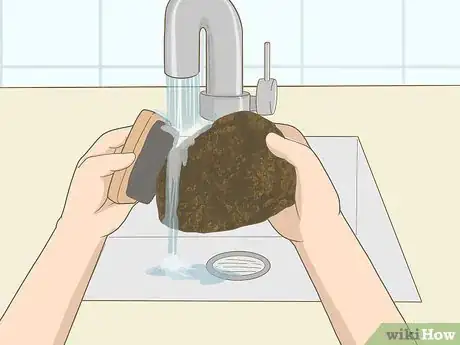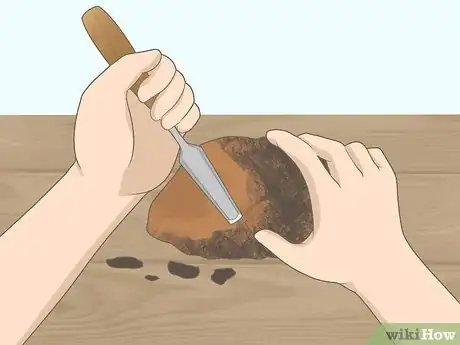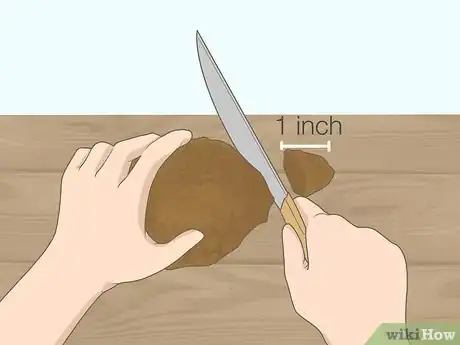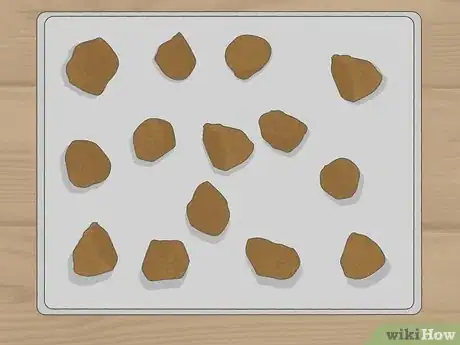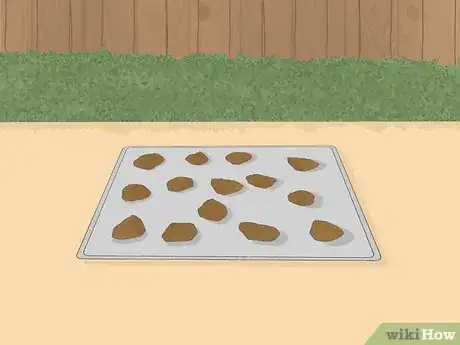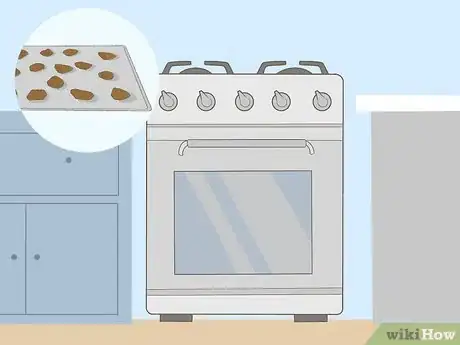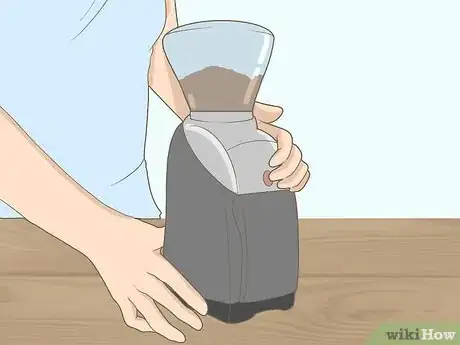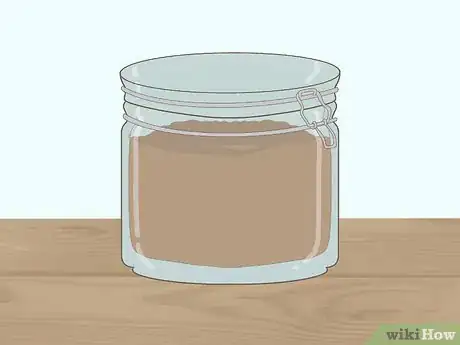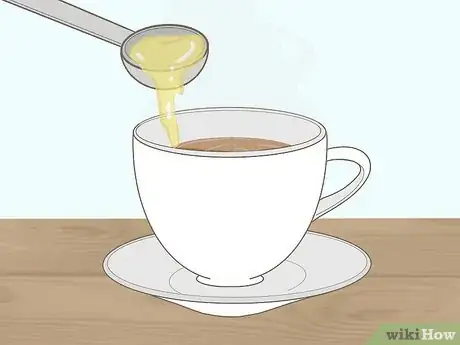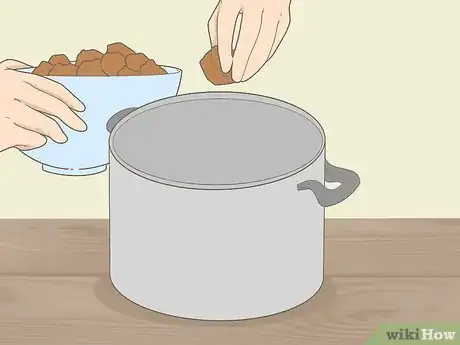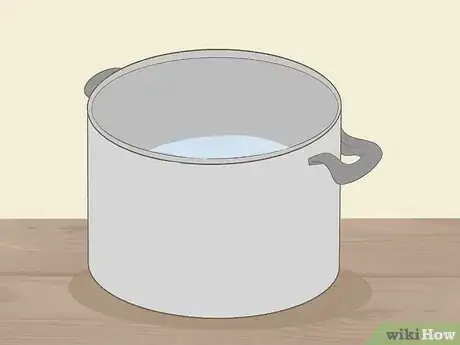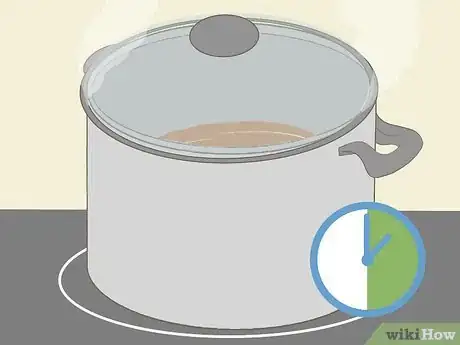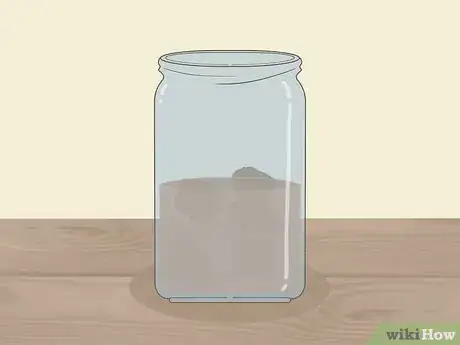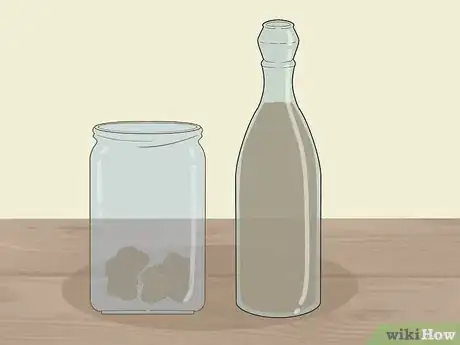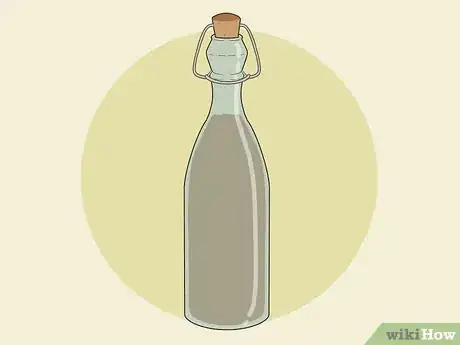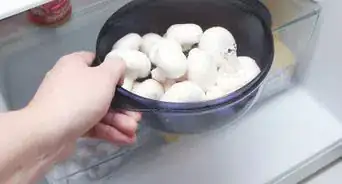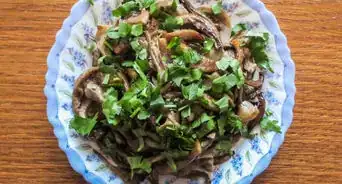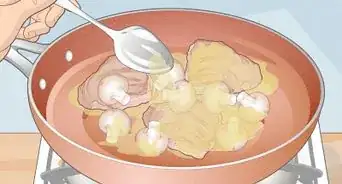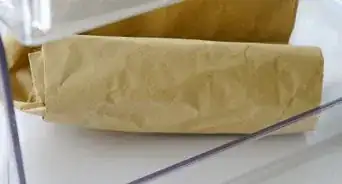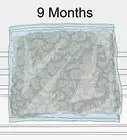This article was co-authored by wikiHow staff writer, Hannah Madden. Hannah Madden is a writer, editor, and artist currently living in Portland, Oregon. In 2018, she graduated from Portland State University with a B.S. in Environmental Studies. Hannah enjoys writing articles about conservation, sustainability, and eco-friendly products. When she isn’t writing, you can find Hannah working on hand embroidery projects and listening to music.
There are 8 references cited in this article, which can be found at the bottom of the page.
This article has been viewed 17,732 times.
Learn more...
Chaga mushrooms are large fungi that usually grow on trees or stumps in Russia, Canada, Europe, Korea, and the United States. The outsides look like blackened charcoal, while the insides are a light brown caramel color. If you’ve harvested some chaga on your own and you’d like to use it to make tea or a tincture to boost your immune system or lower your blood sugar, you can use some simple techniques to clean, dry, and store your chaga to enjoy it for up to 1 year.
Steps
Cleaning and Drying the Mushrooms
-
1Wash off the chaga with water and a soft brush. Use a toothbrush or a soft-bristled brush to gently wipe off any large dirt and debris from the chaga mushrooms. If you want to, run your chaga mushrooms under warm water and use a clean cloth to gently wipe them off.[1]
- Always use caution when handling your chaga mushrooms so that they don’t fall apart.
- Using water to clean them off may make the drying process last longer.
-
2Use a chisel to cut off the black outer crust of the chaga. The outer black crust of the chaga mushroom is great for tinder, but doesn’t have all of the nutritional value that the inside does. Scrape off the outside of the chaga mushroom until the light brown inside is revealed.[2]
- You can also use a handheld saw to carefully cut off the outside of the mushrooms.
Tip: Use the black crust as a fire starter if you’d like to.
Advertisement -
3Cut your chaga into 1 in (2.5 cm) pieces with a knife. Lay down some newspaper or a towel to collect any small pieces that might fall off your chaga mushrooms. Set them on a cutting board and use a knife to carefully break them up into small pieces.[3]
- You can also wrap your mushrooms in a kitchen towel and use a hammer to break them up all at once. Make sure you set the mushrooms on a surface that won’t break, like the floor or ground.
-
4Set out the pieces of chaga on a baking tray. Make sure there aren’t any overlapping pieces so that each one dries at the same rate. You can use multiple baking trays if you need to. Put any small pieces that came off the chaga onto the baking tray as well.[4]
-
5Let your chaga dry for 6 to 8 weeks in a sunny spot. Set the baking tray in a sunny area that stays cool and dry. Check on your chaga mushrooms after 6 weeks to see if they feel dry and crumbly. Leave them on the tray until they are completely dried out.[5]
- It’s important for your chaga to dry out all the way so that it doesn’t get moldy.
-
6Put your chaga in the oven for 8 hours for a faster drying process. If you don’t want to wait, preheat your oven to 50 °C (122 °F) and put your chaga mushrooms in for about 8 hours. If they start to turn dark brown or black, take them out of the oven right away.[6]
- Using the oven is much faster, but it also has the potential to burn your chaga mushrooms.
Grinding Dried Mushrooms for Tea
-
1Grind your chaga chunks in a coffee grinder or blender. Pour all of your chunks and any small pieces or powder from the baking tray into a grinder or blender. Pulse your grinder or blender 5 to 10 times until the chaga is in a fine powder, similar to granulated sugar.[7]
- Traditionally, chaga mushrooms were ground with a mortar and pestle. Feel free to use these tools to grind your mushrooms instead.
-
2Store your chaga powder in an airtight container for up to 1 year. Put your chaga powder into a plastic or glass container that has an airtight lid and store it in a cool, dry place, like a kitchen pantry. As long as your chaga powder doesn’t get wet, you can keep using it for 1 year after you make it.[8]
- After 1 year, the benefits of the chaga may not be there anymore since it isn’t fresh.
-
3Combine boiled water and chaga powder to make tea. Boil water and pour 1 tablespoon (14.8 ml) (14 g) of chaga powder into a cup. Pour the boiling water into the cup and let it sit for about 10 minutes.[9]
-
4Add honey or maple syrup for a natural sweetener. Chaga tea can be slightly bitter, so if you’d like to sweeten it up, add some honey, simply syrup, or maple syrup. Enjoy your chaga tea daily or as often as you’d like to drink it.[10]
- Chaga tea may help to lower your blood sugar and boost your immune system.[12]
Warning: Do not drink chaga tea if you have diabetes or other blood sugar issues. Check with your doctor about how different medications react with chaga tea.[11]
Making Tinctures with Dried Chunks
-
1Put a handful of chaga chunks at the bottom of a pot. Take about 20 pieces of chaga chunks and place them in a wide, deep pot. Make sure they are all completely dry and don’t have any moisture left in them.[13]
- You can tell your chaga pieces are dry by seeing if they crumble when you squeeze them.
-
2Fill the pot with 0.5 litres (17 fl oz) of water and boil it. Turn your stovetop to high heat and wait 5 to 10 minutes for large bubbles to appear in the water. If the water starts to boil over, turn down the heat slightly.[14]
-
3Simmer the water and chaga for 30 minutes. Turn your stovetop to medium heat and allow your mixture to simmer. If it starts to boil again, turn down the heat until there are only small bubbles at the top of your liquid.[15]
- Simmering your mixture allows the nutritional benefits of the chaga to leach out into the water.
-
4Cool the chaga and water and pour it into a jar. Take your pot off the stovetop and allow it to cool for 10 to 20 minutes until it gets to room temperature. Use a funnel to pour your mixture into a large jar with a lid that can hold about double the amount of liquid that you are pouring.[16]
- Make sure your mixture is completely cool so that you don’t shatter the glass jar.
-
5Add 0.5 litres (17 fl oz) of vodka to the jar. Make sure the vodka is at least 40% alcohol. Use a funnel to fill up the jar and add as much vodka as there is water.[17]
- If you don’t have vodka, you can use rum instead.
-
6Store the mixture in a dark place for 1 week. Choose a kitchen cabinet, pantry, or your basement to keep the mixture of chaga, water, and alcohol. Make sure it doesn’t get above 60 °F (16 °C).[18]
- Letting the mixture sit makes the chaga dissolve more.
-
7Strain out the chaga chunks before you use the tincture. Pour the mixture through a strainer and catch the liquid that comes out in a jar with a lid. Throw away the chaga chunks and use your tincture as a supplement that you can take once a week.[19]
Tip: You can take 1 tablespoon (15 mL) of the chaga tincture per week to potentially boost your immune system and lower your blood pressure.
-
8Use your chaga tincture within 8 weeks. The benefits of the chaga will only stick around for so long. Keep your chaga tincture in an airtight jar with the lid closed for 2 months and try to use it all before then.[20]
- Although your tincture won’t spoil, it won’t provide you as many benefits if you don’t use it in time.
Things You’ll Need
Cleaning and Drying the Mushrooms
- Soft brush
- Chisel
- Knife
- Baking tray
- Cloth
- Cutting board
Grinding Dried Mushrooms for Tea
- Coffee grinder or blender
- Airtight container
Making Tinctures with Dried Chunks
- Large pot
- Glass jar
Warnings
- Talk to your doctor before drinking chaga tea to see how it will interact with any medications you are on.[21]⧼thumbs_response⧽
References
- ↑ https://chaga101.com/chaga-harvesting-preparing/#prepare
- ↑ https://www.youtube.com/watch?v=hWk5y_LXAZM&feature=youtu.be&t=107
- ↑ https://chagahq.com/prepare-chaga/
- ↑ https://chaga101.com/chaga-harvesting-preparing/#prepare
- ↑ https://chaga101.com/chaga-tea-recipes-benefits/#prepare
- ↑ https://chaga101.com/chaga-harvesting-preparing/#prepare
- ↑ https://www.youtube.com/watch?v=VER4f9UlYxI&feature=youtu.be&t=511
- ↑ https://chagahq.com/prepare-chaga/
- ↑ https://chaga101.com/chaga-tea-recipes-benefits/#how
- ↑ https://chaga101.com/chaga-tea-recipes-benefits/#how
- ↑ https://www.healthline.com/nutrition/chaga-mushroom#side-effects
- ↑ https://www.healthline.com/nutrition/chaga-mushroom#side-effects
- ↑ https://chaga101.com/chaga-tincture-recipes/
- ↑ https://chaga101.com/chaga-tincture-recipes/
- ↑ https://chagahq.com/prepare-chaga/
- ↑ https://chagahq.com/prepare-chaga/
- ↑ https://chaga101.com/chaga-tincture-recipes/
- ↑ https://chaga101.com/chaga-tincture-recipes/
- ↑ https://chaga101.com/chaga-tincture-recipes/
- ↑ https://chagahq.com/prepare-chaga/
- ↑ https://www.healthline.com/nutrition/chaga-mushroom#side-effects
